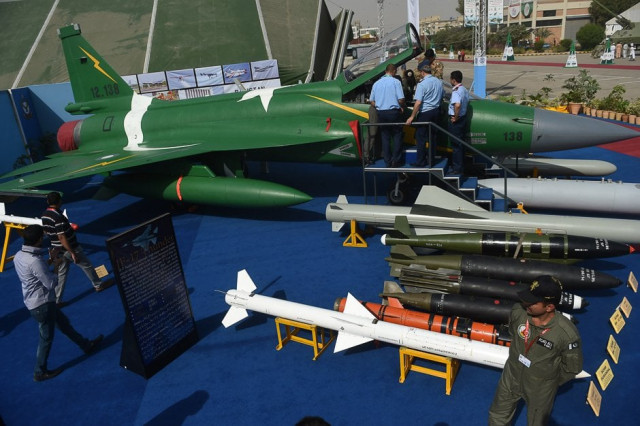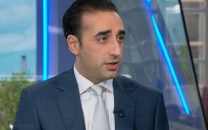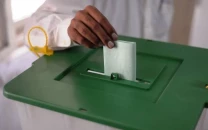Can defence manufacturing turn into an export industry for Pakistan?
For a country which inherited no military factory in 1947, ability to export planes seems like a real feat

Likely to be unveiled in early 2017, the JF-17 Thunder’s Block-III will come with a twin-seat trainer version along with advanced Active Electronically-Scanned Array radar and mid-air-refueliling probe. Speculations are that the aircraft uses greater amount of composite materials to increase its performance, besides addition of other updates in cockpit and weapons’ pods. There are no confirmations about such upgrades, however, Pakistan Air Force has not only been working to upgrade the jet for its own needs but also to make it more attractive for exports to friendly countries with limited budget or lack of access to western technology. Qatar and Saudi Arabia have been following the development and evolution of JF-17 Thunder with enormous interest.
Turkey opts to buy 52 Super Mushshak aircraft from Pakistan
What does it all mean? Has Pakistan's defence industry come of age for sustained exports? Well, the answer is both yes and no. For a country which inherited zero military factories in 1947, ability to export planes seems like a real feat.
Over the years
First prime minister of Pakistan Liaquat Ali Khan laid the foundation of Pakistan’s defence industry by notifying Pakistan Ordinance Factories (PoC) in Wah Cantt in 1951. At the time, manufacturing rifles and ammunition at home was greatly needed given tensions with India in the disputed state of Jammu & Kashmir. The decade of 1960s was by far the best for Pakistan-US relations and involved smooth flow of Washington’s advanced military hardware into Pakistan.
In 1972, the Defence Production Division under the Ministry of Defence worked hard to survive in the climate of western sanctions and weak economic indicators while the 80s again slowed down indigenous arms development initiative except the advances made in development of nuclear deterrence in Kahuta and other allied facilities.
Pakistan Navy considering buying warships from China, Turkey
The 1990s were beset with political infighting, financial handicap and US sanctions; it was the era when Pakistan first considered developing its very own fight jet, then named Super 7, with China. But owing to financial limitations and air superiority over India, the plan was shelved. The post-9/11 developments were catalytic for Pakistan to vigorously pursue path to self-reliance, particularly in the realm of air force.
‘Weapons for peace’
Last week, the ninth edition of International Defence Exhibition and Seminar (IDEAS) brought home the same urge for self-reliance, hard work and innovation with a bigger promise. Impressively, the number of Pakistani companies excelling in defence equipment or its line industries has been on the rise since the biennial event kicked off in 2000. Delegations and companies of 40 countries participated in the event at a time when India’s far rightwing government pledged to isolate Pakistan.
Through IDEAS, Pakistan’s defence exports have grown slowly but steadily; however, the potential remains far from realized due to a multitude of factors. Most important of these factors is lack of focus on modern science and development of high-technology factories in the private sector which has augmented militaries worldwide.
Pakistan’s reliance on assembling imported parts and reverse engineering has slowly come to define national arms production. It is true that no country can single-handedly master state-of-the-art technologies; after the WWII, Soviet Union learnt considerably from the western industry - less through reverse engineering but more via espionage. China also has long relied on Russia for cutting edge technology too. So, the way forward for Pakistan is also to collaborate with other friendly nations such as China, Turkey and Ukraine. Countries such as Belarus, Poland, South Africa, Sweden, Indonesia, Malaysia and Argentina can also be mutually engaged for sharing know-how based on respective nation’s field of expertise.
What future holds?
The JF-17’s Block III is expected to open new avenues for Pakistani defence exports. The recent agreement with a Ukrainian company for upgrading Pakistan’s Al-Khalid tanks is a welcome step in the right direction. Additionally, Pakistan must consider teaming up with Turkey regarding production of gunship helicopters as Ankara reaches out to Islamabad for its indigenous fifth generation fighter jet.
Pakistan’s ordinance factories are set to see a major overhaul as the country’s military decides which rifle will replace G-3 and Chinese-built version of the AK-47, Type-56. Whatever utility rifle is chosen, it will be built in Wah Cantt under licence for domestic use and likely export.
Doha expresses interest in buying Mushshak, JF-17 Thunder aircraft from Pakistan
The country’s defence production for local use has reached $1.5 billion per annum, according to a report published in the journal Jane’s Defence Weekly, which quoted an unnamed Pakistani official as saying: “We have substituted imported defence equipment worth $1.5bn, which for us is a huge bonus”. This year, the sum has been slightly lower, resting at $1.14 billion owing to evolving need for more modern equipment. The figure, however, is set to be significantly higher over the next few years due to export of JF-17 and Super Mushshak besides others.
With the extension of Pakistan’s maritime borders last year, equalling roughly to the landmass of Balochistan province, modernisation of the country’s neglected naval force has become a top priority. Turkey and China have both come forward to enhance its operational and production facility. Dockyards are going to see hectic activity in the future and Pakistan needs to offer more incentive for the private sector to chip in to accelerate development in the realm of military hardware.
Naveed Ahmad is a Pakistani investigative journalist and academic with extensive reporting experience in the Middle East and North Africa. He is based in Doha and Istanbul. He tweets @naveed360



















COMMENTS
Comments are moderated and generally will be posted if they are on-topic and not abusive.
For more information, please see our Comments FAQ